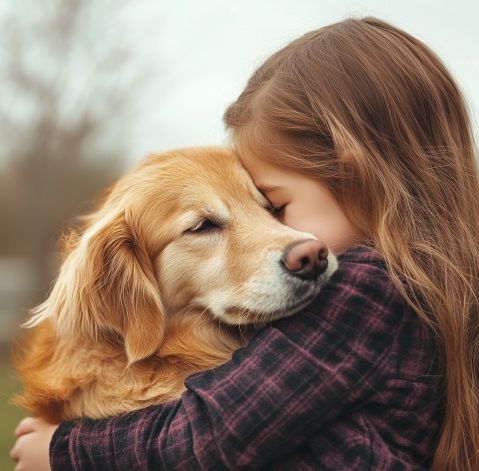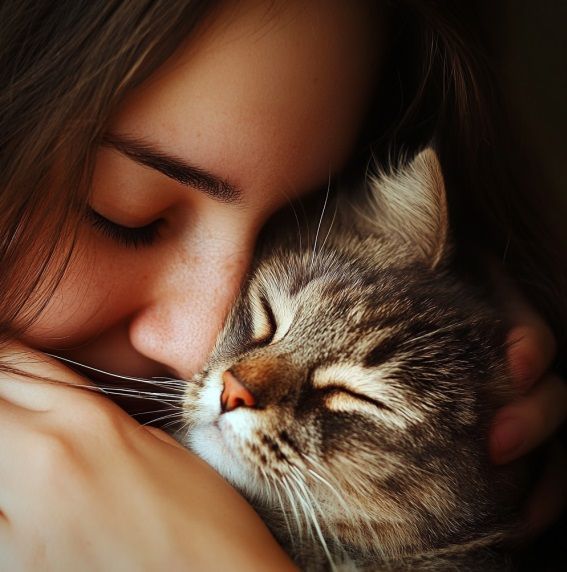How to Talk to Your Child About the Loss of a Pet
How to Talk to Your Child About the Loss of a Pet
Losing a pet is always hard, but it can be especially tough for kids. Pets are members of the family, and kids often bond very closely with them. In many cases, the loss of a pet is a child’s first experience with death and significant grief. It can be hard to explain death to a child, especially when you are mourning yourself. But helping your child find healthy ways to express their feelings can help not just with overcoming the pain of losing a pet, but also with handling future losses later in life.
Every Child Grieves Differently
A child’s understanding of death changes with age. Children under the age of five don’t really understand the permanence of death and may need it to be explained more than once that a pet will not be coming back. Older kids that have a better understanding of what death means but may have a lot of questions about what happened. Older kids and teenagers may struggle with expressing their emotions and may be embarrassed to be seen grieving. At all ages, the death of a pet can inspire worries about a child’s own mortality or the loss of other loved ones and caretakers.
Children are unique individuals, and no two people react to a loss the same way. A child’s response to a pet’s death will depend on the child’s age, their relationship to the pet, the circumstances of the death and so forth.
A wide range of emotions might be experienced during grief: sadness, anger, frustration, guilt, loneliness. The symptoms of grief can manifest in many different ways:
- Anger, resentment and lashing out
- Refusing to do chores or trouble with schoolwork
- Indifference, coldness, quietness, or despondency
- Physical manifestations such as upset stomach
- Nightmares and sleep disruptions
- Regressing to an earlier stage of development, like a return to thumb-sucking or bed-wetting
All of these are common and natural reactions to intense stress and emotional turmoil. It’s important to let your child know that these emotions are normal. Simply naming and validating their feelings can help a lot with overcoming grief.
If your child exhibits any physical symptoms for more than a few days, or if their symptoms become severe enough to disrupt day-to-day life, seeking the help of a medical professional is a good idea. You may also want to consult with a child psychologist or grief counselor to help your child and other family members through a tough time.
How To Explain the Death of a Pet to a Child
When you have time to prepare, it’s a good idea to discuss the approaching loss with your child and answer some of their questions in advance of the event. If you know, for example, that the pet will be euthanized, you can prepare your child by explaining how the process works. You may say that the pet is sick and will never get better, but euthanasia is a way to allow them to pass away peacefully without any pain. If the death is more sudden or unexpected, you’ll want to be as honest as possible about what happened without going into unwanted or traumatizing details—let your child’s questions guide the information you offer.
Here are a few more tips for discussing pet loss with a child:
DO
- Use simple, direct language that the child can understand
- Use the words “death” and “dead” rather than euphemisms
- Make sure the child understands that death is a permanent and irreversible state
- Answer your child’s questions with as much detail as seems appropriate
- Encourage your child to talk about their feelings
- Acknowledge the different emotions that make up grief and be aware that grieving is not a linear process; your child may have a mix of bad days and good days while coming to terms with the loss
- Suggest ways to memorialize the pet as a way to process the grief
DON'T
- Use euphemisms that might confuse a child such as “put to sleep” without making the meaning very clear
- Lie about what happened to the pet (“Kitty ran away” instead of saying Kitty died)
- Ignore a child’s questions or punish them for asking “morbid” or “impolite” questions
- Panic if you see your child incorporating themes of death and dying into their playtime; this is a normal way for kids to process emotions
After the death of a pet, your child may be concerned about other people in the family dying. If your child asks about your death, you might explain it in terms such as, “Every living thing dies, but most people die when they are very old. I plan on being around for a very long time.” It may also be helpful to explain to your child about the concept of “dog years” or “cat years” and explain that different animals have different natural lifespans.
There are a number of age-appropriate books written to help explain the topic of pet death to children. Some popular ones include:
- Sammy in the Sky, by Barbara Walsh
- The Goodbye Book, by Todd Parr
- When a Pet Dies, by Fred Rogers
- Saying Goodbye to Lulu, by Corinne Demas
- Goodbye, Mousie, by Robie H. Harris
If you know that a pet is nearing the end of its life, purchasing or borrowing a book from the library in advance and reading it together can help prepare your child for the future event.
Pet Memorial Services Are a Healthy Way to Process Grief at Any Age
One of the best ways to cope with loss and grief is to memorialize the departed. Holding a memorial service for your sweet companion or coming up with a creative way for your child and other family members to honor and remember the life of your animal can help tremendously with healing.
Pet memorial ideas might include:
- Keepsakes such as pawprints, fur clippings, or the animal’s collar kept safely in a display
- A memorial or ash scattering service to gather together and tell stories about your companion and lay them to rest
- Writing a letter thanking the pet for all the good things it brought to the family, or a poem that can be framed and hung
- Making a photo album or collage of your animal with photos and memories
You can explain to your child that grief is born from love: We mourn a loss because we care so deeply for the animal that died. By channeling that love into a memorial service or ritual, you and your child can build a place in your hearts for the pet’s memory to live on forever.
Best Friends is here to guide your family through this difficult time. We offer compassionate cremation services, personalized pet memorial keepsakes, urns and jewelry, and memorial services that can help you say goodbye to your sweet furry family member. Call us at (505) 345-5615 or stop by our Albuquerque, New Mexico location to learn more about how we can help.













